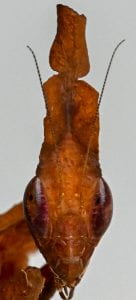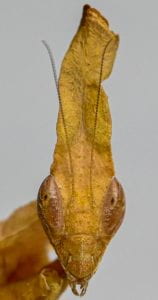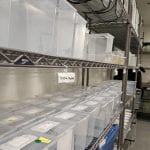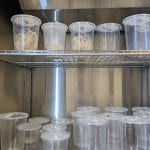Our lab focuses on prey strike and feeding behavior in mantises. This often requires identifying individual animals and ensuring they are healthy and able to perform well. We work on live animals and students involved in our research are required to complete IACUC training. Our vivarium houses 10+ species of mantises in individual containers ranging from 16 – 80 oz dependent on life stage, along with a separate room of Darwin chambers dedicated to ootheca hatching. We also house our live feed (roaches, fruit flies, and standard flies) in the main vivarium. Work in the lab requires care and maintenance of animals to ensure they are healthy and perform well. This entails container cleanings, feeder husbandry, and daily check-ins.
Breeding
Adult mantises are bred with care to ensure availability of new subjects over time. Each ootheca is kept in Darwin chambers that maintain consistent temperature and humidity. Freshly hatched nymphs remain in this chamber initially before being move to the main room.
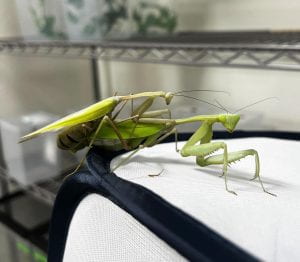
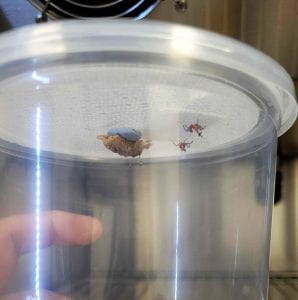

3D Filming Set Up
Our 3D filming requires 2 high speed cameras, a miniature filming studio with lighting/background control, and a transparent platform. Mantises are placed on the platform, offered prey, and filmed with the calibrated cameras. DLTdv8 is used to process footage in our upstairs lab.
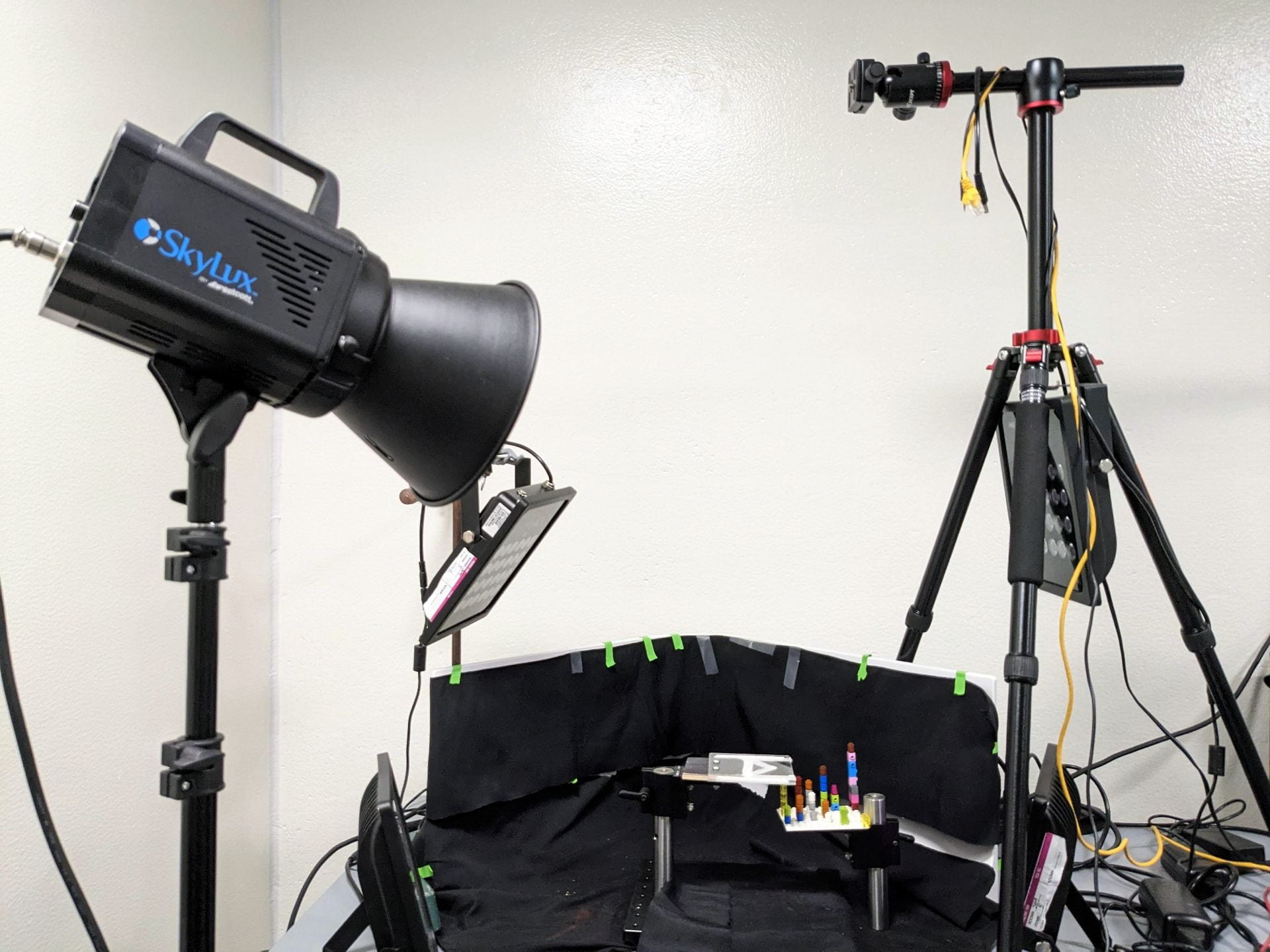

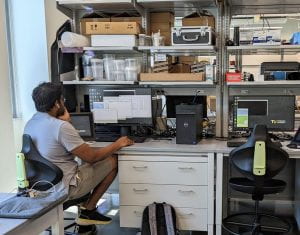
Ingestion Rate Set Up
Our ingestion studies also employ a miniature filming studio, however only one camera is used. This camera captures time-lapsed footage of the prey ingestion process.
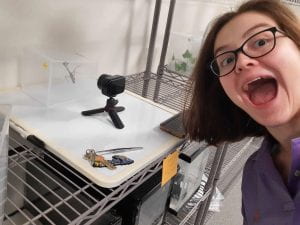
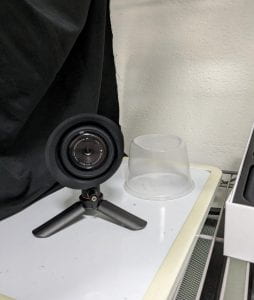
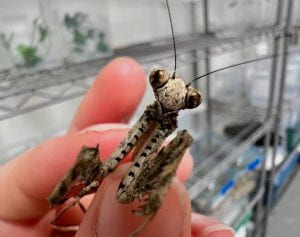
Morphology
Macro photography gives us the opportunity to see our mantids up close and personal. These images capture features like the pseudopupil and mandibles of live and preserved subjects.

